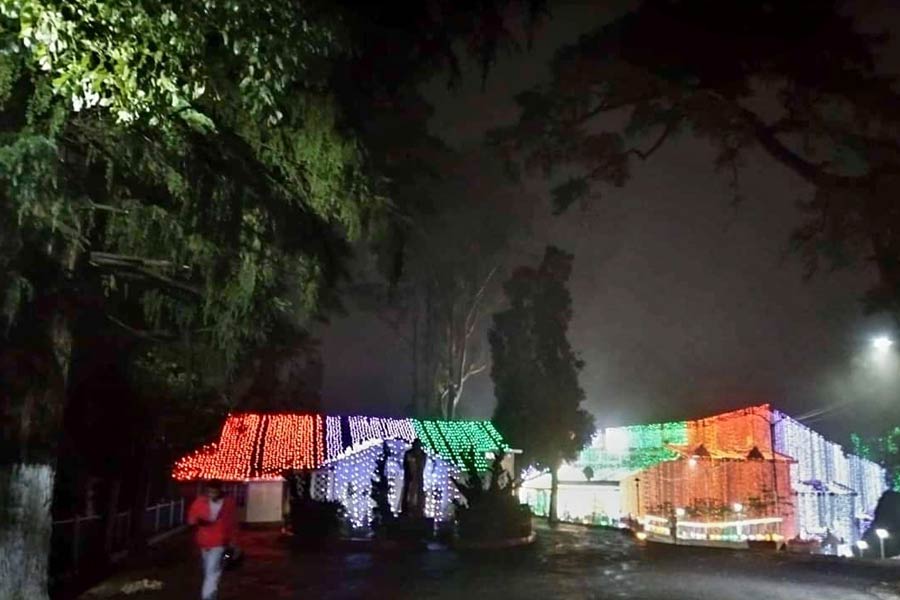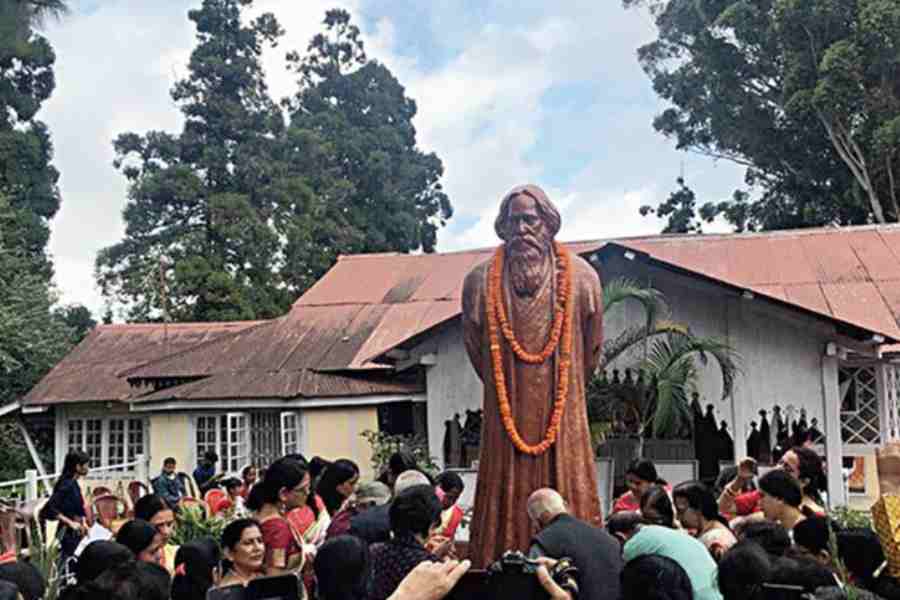Amidst the ethnic tensions simmering in several northeastern states, August heralded a semblance of balm in the abode of clouds. The seat of this rapprochement leads up a narrow, meandering road to Shillong’s Rilbong locality, which hosts the Meghalaya legislative assembly. The adjoining stately bungalow, Brookside, basks in history and heritage. On Independence Day, these buildings looked so resplendent that passersby gazed at them in wonder.
The reason behind their surprise was that Brookside is usually relegated to the lengthening shadows of eventide. When Asia’s first Nobel laureate, Rabindranath Tagore, visited Shillong in October 1919, he stayed in this bungalow, belonging to the then Chittagong assistant commissioner, Kiran Chandra Dey. After his arrival, Tagore wrote to Ranu Adhikari (later Lady Ranu Mukherjee), “There is bright sunshine this morning, with a few stray clouds clinging to the hills, as if basking in the sun. They appear too indolent to precipitate rainfall.” In another letter, he wrote: “I can see the tall deodar trees trying to communicate with the clouds. The garden is resplendent with colourful blossoms like jasmine, chrysanthemum, rose and several unknown varieties. I wake up before sunrise and walk along the path bordering the flowers; they are not afraid of my grey beard or flowing robes. They are full of merriment.”

The Brookside bungalow and adjoining Assembly building lit up in Tricolour lights on Independence Day Sourced by The Telegraph
When Tagore wrote Shesher Kobita while visiting South India in 1928, he devoted 13 of the 17 chapters to a Shillong backdrop where Jogamaya’s house is modelled on Brookside. He named the Umshyrpi stream that murmurs alongside the bungalow ‘Nirjhorini’ and the centuries-old pine and eucalyptus trees still stand testimony to Tagore’s elaborate delineation of the surroundings.
It is easy to miss the nondescript site, barring a towering, copper-coloured statue of Tagore outside Brookside. A fortnight ago, the bungalow and the adjoining assembly building were lit up for a conference of the Commonwealth Parliamentary Association being held in the assembly complex. But the decorative lights were removed on August 2, once the meeting ended.
This was indeed a pity because Brookside witnessed the commemoration of Tagore’s 82nd death anniversary last week and keeping the lights on would have been a fitting tribute. Organised by the Tagore researcher and activist, Malabika Bisharad, with the sanction of the state arts and culture department, Brookside was the venue of a spontaneous homage to Tagore.
Bisharad, who lives just across Brookside, has been relentlessly campaigning to secure heritage status for Brookside. Since 2015, she has organised tributes to Tagore on his birth and death anniversaries, as well as the date he first arrived in Shillong. It has mostly been a little gathering of Bengali residents of Shillong as the indigenous population considered it a ‘non-tribal’ celebration.
However, the arts and culture department has, in recent years, joined the programme, with participation from other communities. Last week’s function saw Koch, Khasi and Nepali guests. This Independence Day, Bisharad organised a harmony walk around town from Tagore’s statue and a programme at Brookside where both the Khasi and the Hindi versions of the national anthem were rendered.
The Prime Minister’s Office, moved by Bisharad to accord heritage status to the bungalow, said, “The matter regarding protection of Brookside, Rilbong, as a heritage site in memory of Rabindranath Tagore, has been examined by the Directorate of Arts and Culture... The matter is to be taken up by the Urban Affairs Department.” Accepting this plea would bring a fitting conclusion to the ‘Azadi ka Amrit Mahotsav’ campaign in the abode of clouds.

